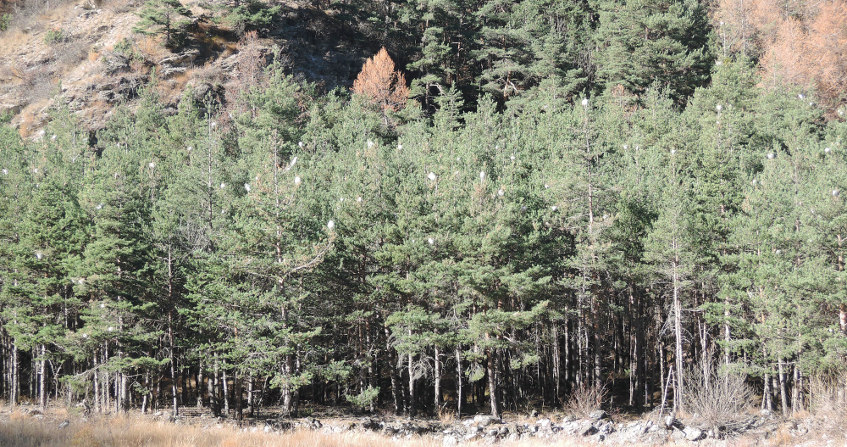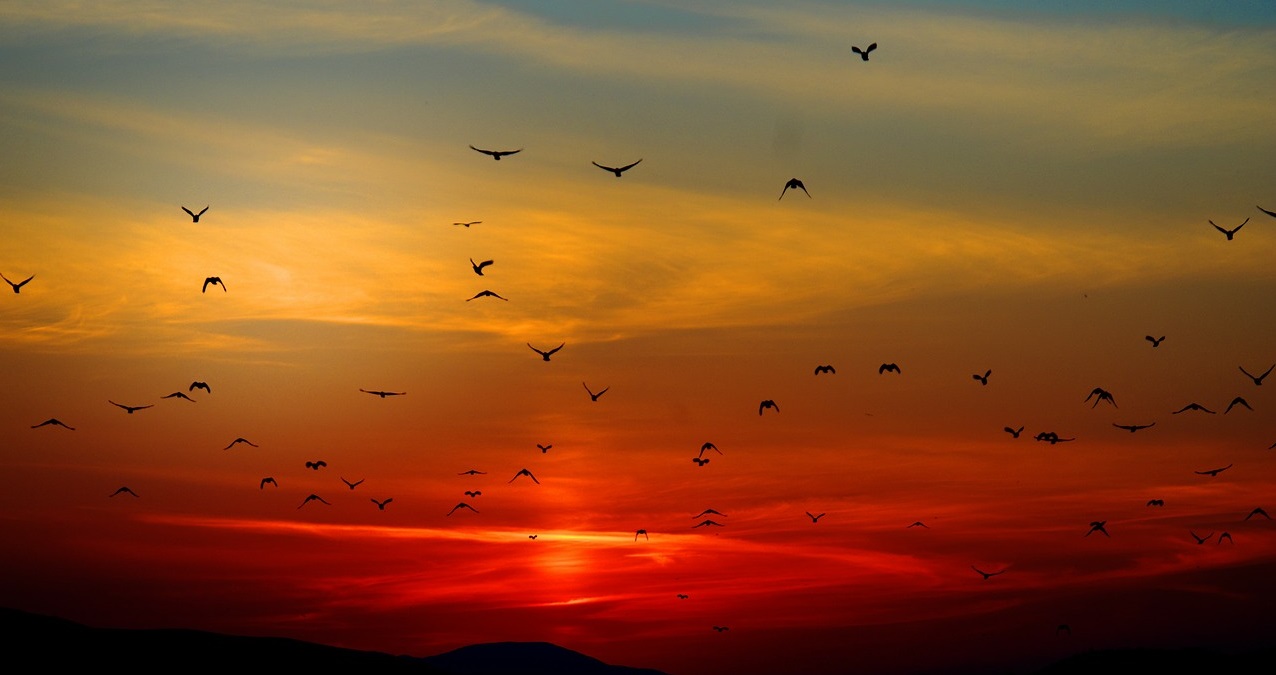What makes butterflies so colourful?
PDF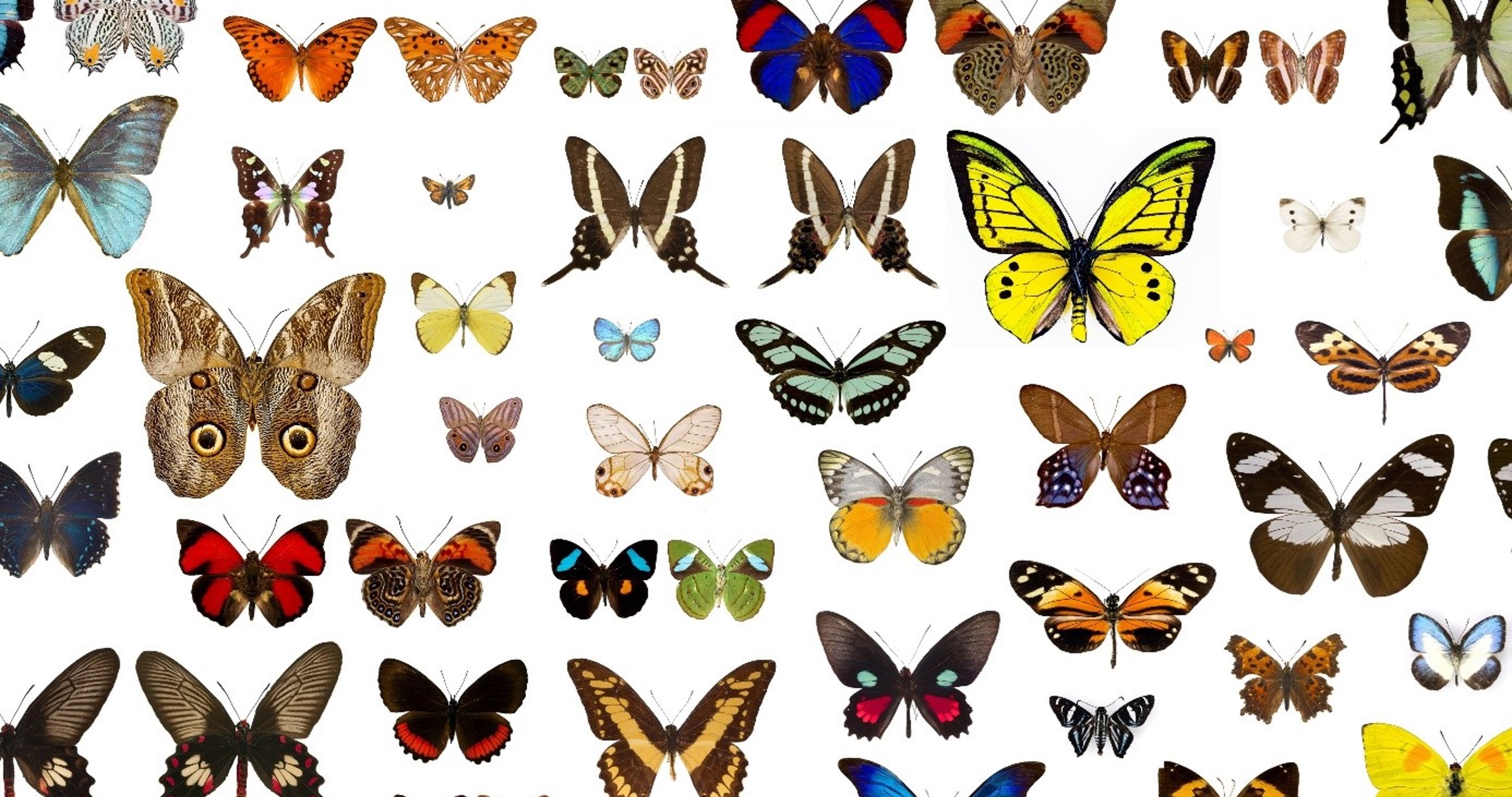
Butterflies, with their delicate patterns and bright colours, are the most popular of all insects. But beyond their beauty, what can the study of their colours tell us about the lifestyle and evolution of these fascinating insects? The colour patterns on their wings, formed by the juxtaposition of tiny scales, are extremely diverse: while many butterflies are brightly coloured, some are much duller. All the colours of the spectrum, visible and invisible to the human eye, are found on their wings, where they form highly varied patterns. Some wings are monochrome, while others display highly complex patterns. How are colours produced by butterflies? And what selection pressures are involved in the evolution of this profusion of colours and patterns?
- 1. Colour production: physics and chemistry for butterflies
- 2. Survival and reproduction: wings show their colours
- 3. Evolutionary syndromes: colour patterns do not evolve alone
- 4. Messages to remember
1. Colour production: physics and chemistry for butterflies
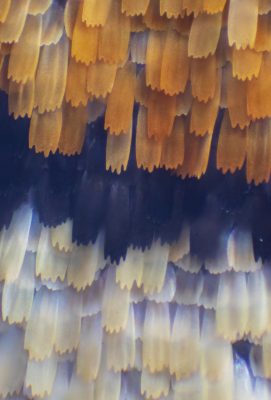
Under the microscope, a butterfly wing looks like the surface of a roof covered in tiles – the scales. Although wings often show subtle gradations of colour, each scale is only one colour: it is the juxtaposition of monochrome scales that produces the gradations, like a mosaic (Figure 1).
Most butterfly colours are due to the presence of pigments in the scales. Coloured pigments are molecules that absorb part of the light spectrum and reflect the rest. It is therefore the chemical properties of these pigment molecules, particularly the nature of certain chemical bonds, that mainly define the wavelength of the light absorbed by the scales (and therefore the colour reflected). Different pigments are produced in different scales, which will therefore have different colours: for example, melanin produces a dark brown colour, while pterins produce light colours. Most pigments are synthesised by the butterflies themselves, and do not necessarily depend on their diet.

The colours generated by these physical structures, also known as structural colours, are very common: they are responsible for the colour in most blue butterflies. Blue pigments, on the other hand, are very rare in nature, not least because of their instability. While pigment colours are matt, structural colours are often iridescent: their hue and brightness depend on the angle of observation and illumination. This iridescence produces colour changes when the butterfly flaps its wings. These colour changes during flight probably affect the visual effect on predators or other butterflies. What exactly are the visual effects of the butterflies’ colour patterns? What impact do they have on butterfly survival and reproduction? What selection pressures are involved in the diversity of butterfly wing colours and patterns?
2. Survival and reproduction: wings show their colours
The evolution of colourations in butterflies is highly dependent on their lifestyle and environment. Environmental conditions such as temperature and humidity can play an important role in the evolution of the wings and their scales.
- Melanisation, for example, contributes to temperature regulation: the presence of melanin on the wings increases heat absorption. Wings with larger melanised areas allow butterflies to warm up and become active more quickly in the morning when the sun rises. Melanisation of the wings may therefore evolve in species living in colder environments.
- The scales also have hydrophobic effects, preventing the wings from getting wet, making it easier to fly in damp conditions.
These thermoregulatory or hydrophobic properties, by improving the survival of butterflies, may have contributed to the evolution of certain types of scales, and therefore affected the evolution of colouration. But the visual effects generated by the colour patterns on the scales probably also play a major role in their evolution. Wing patterns can in fact be perceived and recognised by predators, but also by other butterflies, and their variations therefore probably influence not only the survival but also the reproductive success of the individuals that wear them.
2.1 Predation: when colour is a matter of life and death
Predation, particularly by birds, is a major selection factor in the evolution of butterfly colour patterns. Colour patterns can be classified according to the type of effect they have on predators [1].
2.1.1 No colour: when butterflies disappear
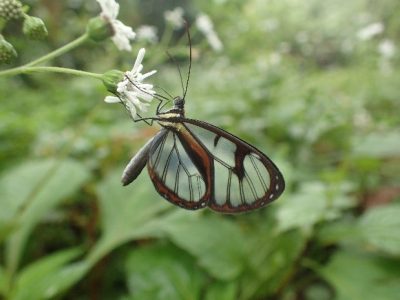
Transparency is caused by a reduction in the coverage of the membrane by the scales, due to the disappearance or reduction in the size and density of the scales, or a change in their orientation. Transparency is sometimes enhanced by the presence of a network of tiny protuberances a few hundred nanometres in size on the surface of the membrane, which has the effect of cancelling out reflections.
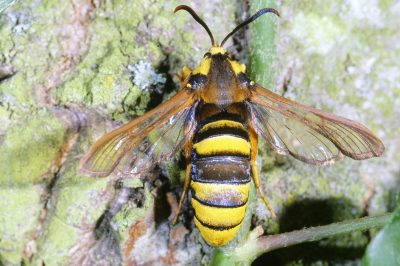
- In some cases, transparency is undeniably associated with a reduction in the butterfly’s detectability by predators: what better camouflage than to blend into any environment?
- In other cases, transparency increases the resemblance of the butterfly to an organism or object in the environment that does not interest or that frightens predators, such as a decaying dead leaf or a wasp (Figure 4).
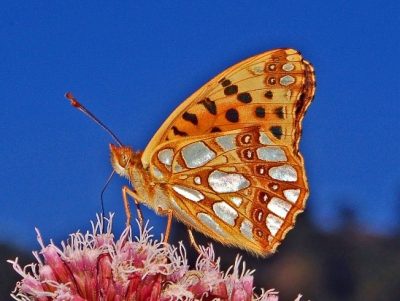
The effect of the mirror zones on the wings (Figure 5), whose metallic appearance is caused by the structure of the scales (alternating layers of imperforate chitin), is more speculative. These zones could contribute to the butterfly’s camouflage by reflecting the local environment.
2.1.2 Cryptography: patterns that limit detection
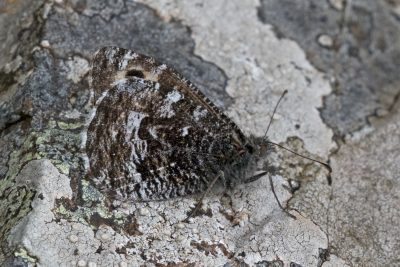
For example, in many butterfly species, the ventral surfaces of the wings are often much more cryptic than the dorsal surfaces. This is certainly due to the position that these butterflies adopt when they are at rest: their wings are closed, hiding the coloured dorsal surfaces, and exposing only their duller ventral surfaces to hungry predators.
2.1.3 Masquerade: misleading colour patterns
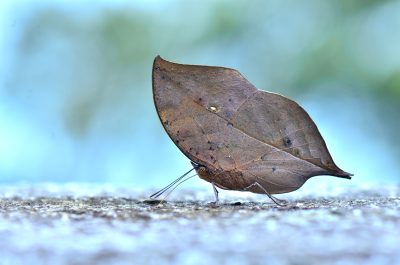
As with crypis, masquerade is generally seen when the butterfly is motionless, with its wings closed: it is therefore the ventral side that bears the masquerade patterns, as in leaf butterflies (for example, the genera Kallima in Asia or Zaretis in America), which sometimes bear a striking resemblance to a leaf (Figure 7). On the other hand, the dorsal side, which is hidden at rest, is often very brightly coloured, suggesting very different selection pressures acting on the ventral and dorsal sides of butterflies.
2.1.4 Escape despite detection: deimatism and deflection
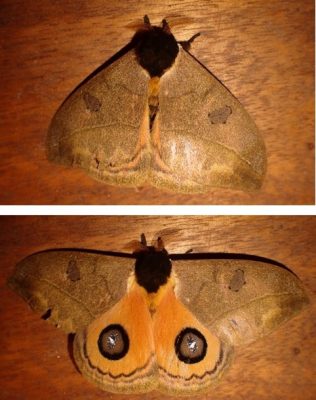
- Deimatism – The butterfly will suddenly unmask a brightly coloured pattern, sometimes resembling an eye (a pattern called an ocellus or eye spot). This sudden colour signal can frighten the predator, or at least make it hesitate, giving the butterfly time to escape. This is the case, for example, with many moths: their hind wings, which are masked at rest by the usually cryptic forewings, are very often brightly coloured, in red, orange, or yellow (Figure 8), and the moths can suddenly reveal them if a predator gets too close
- Deflection – Other patterns can also defeat an attack, by drawing the predator’s attention away from the vital parts of the butterfly. This attack deflection has been suggested for certain eyespots located near the edge of the wings, or other brightly coloured markings associated with the tails worn by some butterflies (Video 1). These markings, which attract attacks, are worn on particularly fragile areas of the wings: they can break and make it easier for the butterfly to escape.
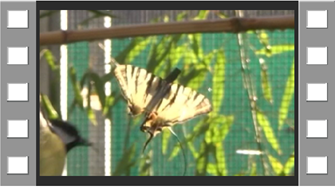 Video 1. Great tit attacks on the tails and coloured spots of the scarce swallowtail (Iphiclides podalirius) in captivity. Video © A. Chotard, with permission
Video 1. Great tit attacks on the tails and coloured spots of the scarce swallowtail (Iphiclides podalirius) in captivity. Video © A. Chotard, with permission
The evolution of these two types of patterns would therefore depend on the types of predators encountered, as well as the visual aspect of the environment in which the different butterfly species live.
2.1.5 Dorso-ventral contrast: when colour makes capture difficult
A strong contrast between the dorsal and ventral sides can make the trajectory of a butterfly in flight more difficult to predict: a butterfly that is light on its dorsal side and dark on its ventral side will produce colour flashes in flight, alternately exposing both sides. These appearances and disappearances can seriously complicate the task of an aerial predator. This effect is thought to be involved in the evolution of the dorsal blue of Morphos butterflies – the large Amazonian butterflies. In fact, their blue is iridescent, which accentuates the fluctuating nature of their colouring and makes them even more difficult to capture! (Video 2)
 Video 2. The dorso-ventral contrast and blue iridescence of this Morpho menelaus cause it to flash in flight, making it difficult to catch. [Video © C. Le Roy, with permission]
Video 2. The dorso-ventral contrast and blue iridescence of this Morpho menelaus cause it to flash in flight, making it difficult to catch. [Video © C. Le Roy, with permission]
In addition to this difficulty of capture, if the brightly coloured butterfly detected in flight lands, the sudden disappearance of the colour signal pursued may cause the predator to give up the chase. The evolution of dorsal and ventral colour patterns can therefore depend on the behaviour and flight abilities of butterflies, which can vary greatly from one species to another.
2.1.6 Aposematism: colours to be avoided!
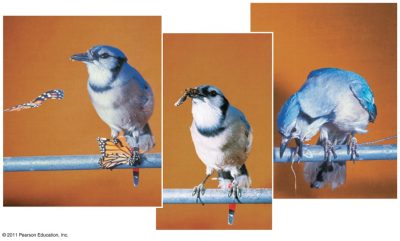
The protection afforded by these aposematic patterns is such that any resemblance to these butterflies gives the wearer an advantage: the chance of being mistaken for them and avoided! This effect has given rise to spectacular cases of mimicry, where not only do different species of poisonous butterflies look the same, but where completely edible butterflies also bear a striking resemblance to poisonous butterflies of other species (see focus). However, these similarities in pattern are not without confusion for the butterflies themselves, because while it is important to escape predators, it is also crucial to attract partners of one’s own species first and foremost. And here too, colours have their say.
2.2 Specific recognition and sexual selection: tastes and colours
2.2.1 Colours make the difference… between species

There may therefore be a conflict between different selection pressures affecting the evolution of colour patterns: predation may favour the evolution of resemblance between species, whereas selection for specific recognition will favour their divergence. The colour patterns of butterflies are therefore sometimes the result of evolutionary trade-offs between different selection pressures.
2.2.2 The choice of females changes the game
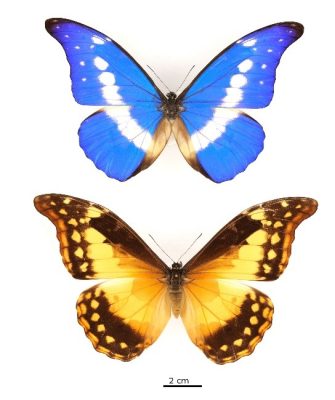
The effect of sexual selection on the evolution of dimorphism has therefore probably had a major impact on the evolution of sexual dimorphism in butterflies, where male patterns seem to have diverged significantly from ancestral patterns as a result of this selection.
2.2.3 Different lifestyles for males and females
Differences in patterns displayed by males and females in some butterfly species could also result from differences in lifestyles between the sexes. In many species of butterflies, females, weighed down by eggs, exhibit slower flight, which would impose on them a stronger predation selection. This increased predation can promote the evolution of cryptic colourations in females, but also mimetic patterns of toxic species. The relative importance of natural and sexual selection in the evolution of sexual dimorphism of the coloured patterns of butterflies is an old question, which in their time opposed the two discoverers of natural selection. Charles Darwin saw a preponderant role for sexual selection in the divergent evolution between males and females, while Alfred Wallace favoured an effect of different selection pressures between the sexes. This question of the respective contribution of natural and sexual selection on the evolution of sexual dimorphism still motivates numerous research studies in evolutionary biology today.
3. Evolutionary syndromes: colour patterns do not evolve alone
This interaction between sexual and natural selection points to another fundamental notion: the evolution of butterfly wing colours depends on the evolution of other traits. For sexual selection, it is the visual perception of the butterflies themselves but also their visual preferences. Indeed, the existence of colour differences between males does not matter if females cannot see them, or if they are indifferent to them! To fully understand the evolution of butterflies’ colours, we must also study their vision. The adage “beauty is in the eyes of the beholder” takes on a very concrete meaning here!
For predation, it’s the same thing: everything depends on the perception of the predators: a highly contrasting sexual signal in the UV could be invisible to a predator lacking UV vision, and therefore have a limited cost. And this co-evolution of colour with other traits is not limited to vision. The evolution of colour patterns is probably strongly dependent on the flight behaviour of butterflies. For example, it’s the combination of iridescent blue and fast flapping flight that makes Blue Morphos difficult to catch. So much so that in certain species of Morphos, in which the flight is slow and gliding, the iridescent blue has disappeared: a brightly coloured gliding butterfly would make too easy a target! And it’s the opposite for toxic butterflies: their slow and quiet flight probably favours the visual recognition of their aposematic patterns by predators.
The evolution of the coloured patterns of butterflies therefore makes it possible to illustrate two fundamental aspects of morphological evolution:
(1) there are often different selection pressures acting simultaneously on the evolution of a trait, sometimes in synergy, but sometimes in opposition, and the observed evolution therefore often results from evolutionary trade-offs.
(2) morphological traits, such as colour, do not evolve alone, but often in close connection with other traits, whose evolution they influence, but whose influence they are also subject to: we then speak of coevolution.
So, if we love butterflies for the beauty of their colours, they are also a model of choice for understanding the mechanisms of evolution: and the study of their delicate patterns probably still has many surprises in store for us.
4. Messages to remember
- Butterflies belong to the order Lepidoptera, which means ‘scaled wings’.
- The colour of butterfly wings comes from the pigments found in the scales (chemical colour) and/or the structure of these scales (structural colour).
- Scales (and their colour) have multiple effects on the survival and reproductive success of butterflies.
- Scales can help protect butterflies from fluctuations in their environment (temperature, humidity).
- The colour of butterflies can contribute to protection from predators (camouflage, toxicity signal, etc.).
- The colour of butterflies is also involved in their reproductive success (recognition and choice of partner).
Notes and references
Cover image. Colour diversity in butterflies wings [Source : © Copyright Vincent Debat 2023 et Wiki Commons]
[1] Ruxton, G. D., Allen, W. L., Sherratt, T. N., & Speed, M. P. (2019). Avoiding attack: the evolutionary ecology of crypsis, aposematism, and mimicry. Oxford university press.
The Encyclopedia of the Environment by the Association des Encyclopédies de l'Environnement et de l'Énergie (www.a3e.fr), contractually linked to the University of Grenoble Alpes and Grenoble INP, and sponsored by the French Academy of Sciences.
To cite this article: DEBAT Vincent, ELIAS Marianne, LLAURENS Violaine (May 26, 2024), What makes butterflies so colourful?, Encyclopedia of the Environment, Accessed July 27, 2024 [online ISSN 2555-0950] url : https://www.encyclopedie-environnement.org/en/life/butterflies-colour/.
The articles in the Encyclopedia of the Environment are made available under the terms of the Creative Commons BY-NC-SA license, which authorizes reproduction subject to: citing the source, not making commercial use of them, sharing identical initial conditions, reproducing at each reuse or distribution the mention of this Creative Commons BY-NC-SA license.






